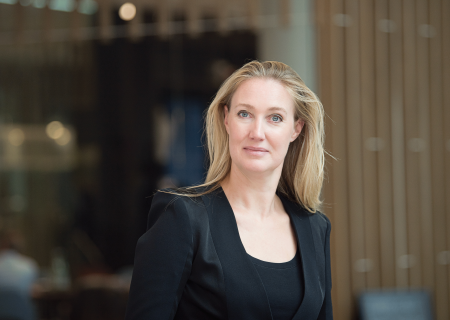Embarking on a new index odyssey
Introducing the INREV ODCE Consultation Index
The new INREV ODCE Consultation Index was launched at the Annual Conference in April. The index’s name, which is usually pronounced ‘odyssey,’ is shorthand for open end, diversified, core and equity.
More simply, the index aims to be the definitive measure of performance for institutional pan-European funds. Similar ODCE indices, produced by INREV’s global partner
associations NCREIF and ANREV, already exist for this type of fund in the US and Asia, so the new index is looking to bridge the gap in regional coverage.
Members can view the snapshot report for the new index, currently in the form of a consultation release, on the INREV website. The index shows the quarterly performance of European ODCE funds from 2011 to 2018, with key highlights including a total return of 6.73% for the last year and an annual average of 7.22% for the last five years.
The index report also describes the rules governing its construction, in particular the type of fund that can be included. Most importantly, all funds must be diversified and have a strategy to invest across Europe, with no more than 65% of gross asset value in a single country or sector. They must also be institutionally owned and have a level of leverage below 40%. France and Germany are the countries with the largest total GAV in the index, representing more than 40% of its value, while offices account for just over 40% of the index Europe-wide, and retail slightly less.
Having that decision taken by INREV will give the index far more credibility in the eyes of our investors, particularly as it will be part of the global ODCE stable
So why is the new INREV ODCE Index important? We asked members of three companies participating in the Focus Group developing the new index for their views.
Peter Epping, Fund Manager for the Hines Pan-European Core Fund, believes strongly that INREV should be producing an industry-standard index for this kind of fund. ‘For the sake of the Pan-European fund business, we hope that the index will come to be the one that is quoted and known in the market,’ he explains. ‘Up to now, Hines had to specify an index of similar funds from the existing INREV fund data, choosing which vehicles to include. Having that decision taken by INREV will give the index far more credibility in the eyes of our investors, particularly as it will be part of the global ODCE stable.’
It’s particularly gratifying to see all the INREV members who manage these funds involved in the initiative, not to mention a number of those with vehicles that could potentially be included as well
Mark Clacy-Jones, Fund Strategist at Aberdeen Standard Investments agrees that this is an important initiative for the development of open end funds investing across Europe. ‘There’s a lot of potential for growing diversified European funds, and the transparency promised by the INREV ODCE Index should really help,’ he says. ‘The ODCE market in the US is far more mature than that in Europe, with a wider range of much larger funds. Having scale allows these funds to be even more broadly diversified, which is what many investors are looking for when implementing their global strategies. It should also encourage a greater number of diversified funds to enter the European market, helping to boost competition. I would expect many of these to join the new index.’
The index aims to be the definitive measure of performance for institutional pan-European funds
Katie Smith, Head of Analytics EMEA at CBRE Global Investors, who chairs the Focus Group for the INREV index, sees it as a good first step towards a global ODCE index. ‘Having a global perspective ourselves, CBRE GI are very positive about bringing greater comparability and transparency to diversified pooled funds worldwide. It’s particularly gratifying to see all the INREV members who manage these funds involved in the initiative, not to mention a number of those with vehicles that could potentially be included as well. As with most INREV innovations, this is very much a member-led development.’
The first index is a consultation release, and INREV members are encouraged to send their feedback to the Focus Group responsible for developing the index over the coming months.
Katie Smith encourages members to make their views known. ‘This particularly applies to how we increase the transparency of the index and how much additional information should be made available. There’s a strong impetus among investors to boost transparency in the private funds arena, but we also recognise that some market participants may have reservations about allowing complete disclosure of the underlying performance data, especially at the vehicle level. We also want to know what information members would like to see on the factors that explain why asset-level and vehicle level returns differ, for instance fees, expenses and the level of leverage.’
INREV ODCE Index
The Index is wholly comprised of open end core commingled equity real estate funds that have a strategy to invest across pan Europe and across multiple sectors. Funds must comply with a strict eligibility criteria for four consecutive quarters in a row to be included in the index.












